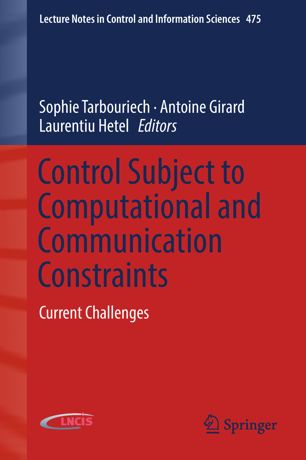

Most ebook files are in PDF format, so you can easily read them using various software such as Foxit Reader or directly on the Google Chrome browser.
Some ebook files are released by publishers in other formats such as .awz, .mobi, .epub, .fb2, etc. You may need to install specific software to read these formats on mobile/PC, such as Calibre.
Please read the tutorial at this link: https://ebookbell.com/faq
We offer FREE conversion to the popular formats you request; however, this may take some time. Therefore, right after payment, please email us, and we will try to provide the service as quickly as possible.
For some exceptional file formats or broken links (if any), please refrain from opening any disputes. Instead, email us first, and we will try to assist within a maximum of 6 hours.
EbookBell Team

4.3
38 reviewsThis book provides a broad overview of the current problems, challenges and solutions in the field of control theory, communication theory and computational resources management. Recent results on dynamical systems, which open new opportunities for research and challenges to be addressed in the future, are proposed in the context of computational and communication constraints. In order to take into the account complex phenomena, such as nonlinearities, time-varying parameters and limited availability of information, the book proposes new approaches for open problems with both theoretical and practical significance.
The contributors’ research is centred on robust stability and performance of control loops that are subject to computational and communication constraints. A particular focus is placed on the presence of constraints in communication and computation, which is a critical issue in networked control systems and cyber-physical systems. The contributions, which rely on the development of novel paradigms are provided are by leading experts in the field from all over the world, thus providing readers with the most accurate solutions for the constraints.
Control subject to Computational and Communication Constraints highlights many problems encountered by control researchers, while also informing graduate students of the many interesting ideas at the frontier between control theory, information theory and computational theory. The book is also a useful point of reference for engineers and practitioners, and the survey chapters will assist instructors in lecture preparation.